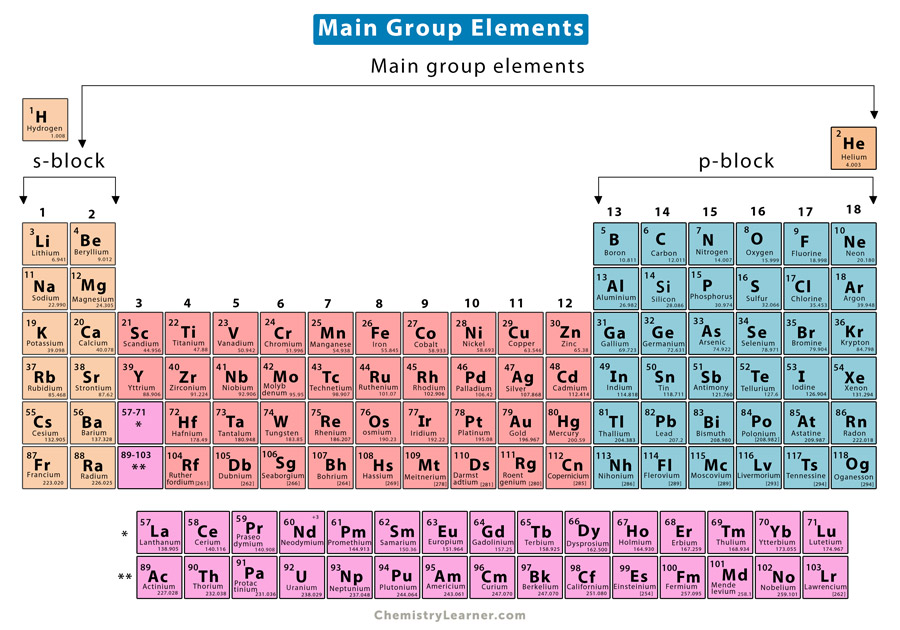Main Group Elements
The main group elements of the periodic table are the elements belonging to s- and p-blocks. These include the Group 1 and 2 elements (s-block), except hydrogen, and Group 13 to 18 elements (p-block) [1-4].
Properties of Main Group Elements
The s-block elements have one primary oxidation state – +1 for Group 1 and +2 for Group 2 – and include alkali and alkaline earth metals. The p-block elements have multiple oxidation states. They include essential metals, metalloids, nonmetals, halogens, and noble gases. Their commonly occurring oxidation states are separated by two units [1-4].
List of Main Group Elements
Some examples of main group elements are as follows [1-4]:
- helium
- lithium
- boron
- carbon
- nitrogen
- oxygen
- fluorine
- neon
Significance of Main Group Elements
The main group elements and a few lighter transition metals are the most abundantly available elements on Earth and in the universe. They comprise 80% of Earth’s crust. It is for this reason that they are also known as representative elements. Also, many elements in the main group are necessary to life on Earth, specifically carbon, nitrogen, and oxygen [1-4].
The main group elements have practical industrial applications and are economically viable to manufacture products. Here are some examples:
- Lithium is used to treat schizophrenia and bipolar disorder
- Sodium is present in table salt
- Magnesium is used in antacids, laxatives, and Epson salt
- Calcium, a vital component in the structures of living beings like bones, teeth, and shells, is used in supplements.
Main Group Elements Exclusions
The transition metals are excluded from the main group, as are lanthanides and actinides. Hydrogen is not included either. There is an ongoing debate among scientists about whether to include some of these elements [1-4].
